Dear New World Investor:
“Space – the final frontier. These are the voyages of the starship Enterprise – its five-year mission to explore strange new worlds, to seek out new life and new civilizations, to boldly go where no man has gone before.”
And so William Shatner, speaking as Captain James T. Kirk, opened the first episode of the original Star Trek in 1966. Eleven years later, George Lucas’ Star Wars opened to packed theaters. Since then, progress in space has been steady if not spectacular, transitioning from huge government programs to private companies like SpaceX and Rocket Lab.
Like so many technologies, exponential growth from a small base in the early days doesn’t create big, startling changes, but then it hits a critical mass where growth keeps going and the numbers get very big very rapidly, Our goal is to get a portion of our assets in front of these exponential trends hitting critical mass.
Click for larger graphic h/t RiskHedge
I’m tracking many of these exponential trends like advanced 3D-printing, small nuclear reactors, gene editing, brain-computer interfaces, self-driving trucks and cars, and quantum computing. I look for rapid revenue growth, recognizing that Amazon taught us that earnings can come later if revenue growth rates are high and persist. That usually means that while you don’t want to put a large percentage of your portfolio into these kinds of stocks, it also means you don’t need to invest heavily to get life-changing returns.
As I’ve said many times, Wall Street has a short time horizon. Professional portfolio managers are measured quarterly, and a few bad quarters means they lose a client. Individuals can invest earlier, when situations are still murky, and can hold on if they enter too early or hit bad times. We saw that with spectacular results in Palantir and crappy results in biotech…so far (and, yes, I bought more AKBA this week).
Which brings us back to space. I recommended Rocket Lab on September 2, 2021 at $11.63. The stock shot up, fell back to the $15-$16 area for a few months, and then spent about eight months falling to the $4 area. It revisited that level several times during the following two years even though the company was making rapid fundamental progress. Wall Street figured it out in the middle of 2024 and you can see what happened.
With the US Space Force, SpaceX, and Elon Musk focusing attention on the final frontier, there’s a shortage of quality public space companies with substantial, rapidly growing revenues. I found one.
Buy Redwire Space
Redwire (RDW) doesn’t launch rockets. Like the Space Systems business of Rocket Lab, they build infrastructure for launch companies, including power generation, antennas, star trackers, cameras, very low earth orbit platforms, and avionics. They provide some key in-space manufacturing and biotech facilities for the customers of launch companies. They also build small satellites for those customers. Redwire has been acquiring and consolidating specialized space companies for years.
Redwire is a Jacksonville, Florida, company that was founded in 2020 by combing companies with up to 45 years of space history. In their 10-K filing, they say: “Redwire is a global leader in mission critical space solutions and high-reliability space infrastructure for the next generation space economy. Our ‘Heritage plus Innovation’ strategy enables us to combine decades of flight heritage with an agile and innovative culture creating new, innovative technologies that are the building blocks of space infrastructure for government and commercial customers.
“Redwire’s primary business model is to provide mission critical solutions based on core space infrastructure offerings for government and commercial customers through long-duration projects…Our mission is to accelerate humanity’s expansion into space by delivering reliable, economical, and sustainable infrastructure for future generations.”
Redwire’s revenues grew 16.7% in 2022 and 51.9% in 2023. They won’t announce December quarter results until mid-March, but management recently raised guidance to $310 million in revenues in 2024, which would be growth of 27.2%. They’ll lose about 54¢ a share in 2024. For 2025, the consensus expects revenue growth of 48.4% to $459 million with a loss of only 3¢ a share. They should turn profitable in 2026.
On January 20, they announced the acquisition of Edge Autonomy, a leading provider of field-proven uncrewed airborne system technology – military drones.
Redwire is paying $150 million in cash and $775 million in stock. They said immediately upon closing, the transaction is expected to be accretive to Redwire’s revenue, adjusted earnings before interest, taxes, depreciation & amortization ( EBITDA), and free cash flow. For the 2025 year, Redwire now is forecasting full year revenues of $535 million to $605 million and adjusted EBITDA of $70 million to $105 million, with positive free cash flow. The deal will close in the June quarter.
Edge has 30 years of experience and primarily sells the Stalker and Penguin drones optimized for long endurance, long-range reconnaissance missions. Redwire CEO Pete Cannito said: “The combination of Redwire and Edge Autonomy creates a uniquely positioned space and defense company focused on two of the fastest growing trends in defense technology. As space and airborne platforms converge into an integrated network of autonomous, collaborative systems, Redwire will be poised to provide end-to-end solutions for multi-domain operations from the surface of the earth to the surface of the moon and beyond.”
I want you to Buy RDW under $18 for a first target of $36.
Market Outlook
The S&P 500 lost 4.2% since last Thursday, starting with its worst drop in two months last Friday as investor worries about higher interest rates pivoted to investor worries about slower growth. On Monday, retail traders sold a record $1.1 billion in stocks in the first two hours of trading. The Index now is down 0.3% year-to-date. The Index went from two standard deviations above its 20-day average price (the upper “Bollinger Band”) to two standard deviations below in only three trading sessions, aka, oversold.
The Nasdaq Composite lost 7.1% as Wall Street engineered a correction to pick up enough profits to fund summer camps for the kids. It is down 4.0% for the year. The SPDR S&P Biotech Exchange-Traded Fund (XBI) fell 6.1% as the biotech bear roared again. It is down 3.3% year-to-date. The small-cap Russell 2000 dropped 5.4% and is down 4.1% in 2025. There was no place to hide.
The fractal dimension shows us this drop is not a new trend down. It is a bit of consolidation after refusing to signal a new trend by dropping through the 55 level.
Top 5
Changes this week: None
Near-Term – chronological order
AKBA Akebia Therapeutics – Vafseo launch
SCYX – ScyNexis – Announce resolution of the manufacturing problem, lifting of clinical hold, restart of MARIO trial, maybe GSK files for hospital use approval
EQT EQT –natural gas price rebound
USL United States 12 Month Oil Fund, LP – crude should rise quickly
FCX Freeport McMoRan – copper shortage
Long-Term – alphabetical order
ABCL AbCelllera – Will become a huge pharma royalty company
UUUU Energy Focus – Domestic uranium supplier
EQT EQT – largest US natural gas company
IBIT iShares Bitcoin Trust – Bitcoin is headed for $150,000
META Meta – a (the?) leader in the metaverse
PLTR Palantir – a (the?) leader in AI applications software
RKLB Rocket Lab – #2 to SpaceX in space
SCYX ScyNexis –First new antifungal in 20 years
Economy
The Atlanta Fed’s GDPNow model estimate for March quarter GDP growth has fallen to +2.3%.
Dollar Death Watch
Tariffs are not inflationary, because they are just a consumption tax paid by the end user. Taxes and tariffs are deflationary. The government keeps the money. Sure, prices go up but that impacts the growth impulse more. Growth goes down, the US dollar goes down, and bond yields go down. This creates a bullish setup for later this year.
Coming Events
All times below are ET, and most presentations and slides are archived on the companies’ websites so you can listen to them.
Friday, February 28
GLW – Corning – 1on1s – Susquehanna Technology Conference
MDNAF – Medicenna – 1on1s – B. Riley Securities Precision Oncology & Radiopharma Conference
Personal Consumption Expenditures Index – 8:30am – The Fed’s favorite inflation indicator
TGTX – TG Therapeutics – 6:45pm – Poster presentations at Americas Committee for Treatment and Research in Multiple Sclerosis (ACTRIMS) annual forum
Monday, March 3
AG – First Majestic – Through 3/5 – Prospectors & Developers Association of Canada (PDAC)
TGTX – TG Therapeutics – 8:30am – Earnings conference call
NVDA – Nvidia – 11:10am – TD Cowen Health Care Conference
CMPS – Compass Pathways – 1:10pm – TD Cowen Health Care Conference
ABCL – AbCellera – 2:30pm – TD Cowen Health Care Conference
EDIT – Editas Medicines – 3:30pm – TD Cowen Health Care Conference
Tuesday, March 4
GILD – Gilead Sciences – 11:10am – TD Cowen Health Care Conference
ON – Onsemi – 6:20pm – Morgan Stanley Technology, Media & Telecom Conference
FSLY – Fastly – 7:50pm – Morgan Stanley Technology, Media & Telecom Conference
RKLB – Rocket Lab – 8:00pm – KeyBanc Emerging Technology Summit
Wednesday, March 5
EDIT – Editas Medicines – Unspec. – Earnings release; no conference call
VET – Vermilion Energy – After the close – Earnings release; conference call tomorrow
PYPL – PayPal – 1:00pm – Morgan Stanley Technology, Media & Telecom Conference
NVDA – Nvidia – 3:20pm – Morgan Stanley Technology, Media & Telecom Conference
Thursday, March 6
QUIK – QuickLogic – Unspec. – Starting Five Virtual #4 Conference (the Intel Public Sector Summit)
VET – Vermilion – 11:00m – Earnings conference call
Friday, March 7
February payrolls – 8:30am
Big Tech: The Biotech & Digital Dominators MegaShift
There are at least four ways to make money in the stocks of these large, growing, dominant companies. You can:
* * Buy a stock and hold it
* * Buy a stock and write a call option against it
* * With a Level IV options account, write an out-of-the-money put option
* * With a Level IV options account, write an out-of-the-money put option and use part of the premium to buy an out-of-the-money call option
Apple (AAPL – $237.30) will spend more than $500 billion in the US over the next four years. They expect to expand teams and facilities in Michigan, Texas, California, Arizona, Nevada, Iowa, Oregon, North Carolina, and Washington. They will build a new 250,000 ft2 factory in Texas to make servers for Apple Intelligence, double their US Advanced Manufacturing Fund, start a manufacturing academy in Michigan, and accelerate R&D investments in AI and silicon engineering. AAPL is a HOLD – I expect to move it back to Buy under $175 for new iPhones.
Gilead Sciences (GILD – $111.99) said that the European Medicines Agency has validated for parallel accelerated review the company’s Marketing Authorization Application and EU-Medicines For All application for lenacapavir, the company’s twice-yearly injectable HIV-1 capsid inhibitor for the prevention of HIV as pre-exposure prophylaxis (PrEP).
Separately, the European Commission (EC) has granted conditional marketing authorization for seladelpar, an orphan designated drug, for the treatment of primary biliary cholangitis in combination with ursodeoxycholic acid (UDCA) in adults who have an inadequate response to UDCA alone, or as monotherapy in those unable to tolerate UDCA. GILD is a Long-Term Buy under $90 for a first target of $120.
Meta Platforms (META – $658.24) made their mixed and virtual reality education offering, Meta for Education, available to the general public. Meta for Education gives educators access to Meta Horizon managed solutions for education, which help students using Meta Quest devices learn through engaging virtual and mixed reality experiences. I am moving META to a Buy because it hits its lower Bollinger Band, now under $655.
Micron (MU – $91.82) declined with Nvida, even though DRAM sales for AI applications are tremendously strong. They are the first in the industry to ship samples of a 1γ (1-gamma), sixth-generation (10nm-class) DRAM node-based DDR5 memory designed for next-generation CPUs to power future computing platforms from the cloud to industrial and consumer applications to Edge AI devices like AI PCs, smartphones, and automobiles. MU is a Buy under $102 for a $140 first target.
Nvidia (NVDA – $120.15) reported January fourth quarter revenues up 78.8% from last year to $39.33 billion, above the $38.16 billion consensus estimate and more than their annual revenue two years ago. That included $11.0 billion of Blackwell architecture revenue, the fastest product ramp in the company’s history. They earned 89¢ per share pro forma, also above the consensus for 84¢.
Data center revenue grew 93% from last year to $35.6 billion, above estimates of $34.1 billion. Cloud service providers made up 50% of data center revenue in the quarter. Wall Street focused on the lower rate of growth than the 112% in the October quarter, and well below the growth rate of more than 400% seen in last year’s fourth quarter.

On the conference call (AUDIO HERE and TRANSCRIPT HERE), CEO Jensen Huang guided April first quarter revenues to $43.0 billion ±2%, just above the $42.05 billion estimate. He expects a gross margin of 71% ±0.5%. Wall Street expects 85¢ a share, up 63% from last year’s 52¢.
Jensen said: “Demand for Blackwell is amazing as reasoning AI adds another scaling law — increasing compute for training makes models smarter and increasing compute for long thinking makes the answer smarter. We’ve successfully ramped up the massive-scale production of Blackwell AI supercomputers, achieving billions of dollars in sales in its first quarter. AI is advancing at light speed as agentic AI and physical AI set the stage for the next wave of AI to revolutionize the largest industries.”
So, what did Wall Street not like about the outlook that caused the stock to fall 8.5% today? Well, Jensen’s guidance for 71% ±0.5% gross profit margin in the March quarter was below the consensus for 72.1% because “the team continues to scale its Blackwell shipments higher and incurs expedite fees to get systems to customers as rapidly as possible.”
The horrors! Imagine deliberately incurring expedite fees just to get systems to customers as rapidly as possible! What a way to run a company! Don’t these guys know all that matters is the next three months? What are they trying to do, build a juggernaut to dominate AI semiconductors for the next decade? (Chief Financial Officer Colette Kress said gross margin will return to a “mid-70s” percentage by the end of the year, so there’s that.)
I have been following the semiconductor industry since American Express Investment Management invested in the last private round of Intel. What happens in these shortage situations is not that demand falters first. Ignore all the talk about Deepseek or rumors of canceled data center leases. What happens is supply catches up to demand and the shortage premium in the chip’s price goes away. That will happen to Blackwell sometime, but probably not until 2026.
But because Nvidia now is on a once-a-year new generation cadence, they can keep growing at a very high rate for a long time. Jensen mentioned several new, even more powerful chips that will be unveiled at the coming GTC conference on March 17. Add in their ecosystem of the CUDA software and numerous pre-trained models from biotech to robotics, and I expect them to continue to dominate the AI revolution. Like Amazon from 2000 to today, there will be periods when the stock drops and when it soars. Wall Street analysts will try (and mostly fail) to catch the swings. Most retail holders will either panic sell the drops or sell the rips too early. YOU have a superpower – you can buy and hold for the entire run. As my friend Keith Fitz-Gerald puts it:

NVDA is a Buy under $125 for a $180 first target.
Onsemi (ON – $47.38) presents Tuesday at the Morgan Stanley Technology, Media & Telecom Conference. ON is a Buy under $60 for a $100 first target.
Palantir (PLTR – $84.77) ended a five-day losing streak on Wednesday, following earlier pressure stemming from Defense Secretary Pete Hegseth’s announcement of planned 8% reductions in US military spending over the next five years. As I said, that’s good for PLTR, not bad.
They announced a multi-year strategic partnership with SAUR Group, a global leader in essential water distribution, wastewater treatment, and smart water solutions. SAUR will use Palantir Foundry and AI Platform (AIP) to transform their contract management processes through Palantir’s advanced Generative AI capabilities.
In the water and environmental services industry, managing complex, multi-year contracts efficiently is critical. These master agreements often span thousands of pages in PDF format and contain a wide range of operational targets and reporting requirements. SAUR will get clear, real-time visibility into these contracts. which is essential for mitigating risks, ensuring accountability, and delivering high-quality service to customers. PLTR is a Buy under $100 for a $150 target.
PayPal Holdings (PYPL – $70.73) held their Investor Meeting (WEBINAR HERE and 224 SLIDES HERE). CEO Alex Chriss said: “Our vision is for PayPal to be the commerce platform powering the global economy, and we have the scale, ubiquity, and data advantages to make that happen…Looking ahead, we expect high single-digit transaction margin dollar growth and low teens+ non-GAAP EPS growth by 2027. We have a clear strategy designed to accelerate profitable growth for years to come.”
Chriss was hired to make transaction margin dollars start growing – that is the key driver of PayPal’s stock. The turnaround isn’t done yet, but this kind of public commitment is pretty unusual and probably means he’s gotten confident.
PayPal already operates in over 200 global markets with tremendous scale. They processed $1.7 trillion in payment volume last year in over 26 billion transactions from over 430 million active consumer and merchant accounts, including 223 million monthly active accounts.
To build on this, the company introduced PayPal Open, a comprehensive merchant platform that integrates PayPal’s commerce enabling tools, ranging from payments to financial services to risk solutions, with external commerce partners. As part of PayPal Open, they expanded their partnership with Verifone to bring together Verifone’s in-person payments hardware with PayPal’s Braintree enterprise payment processing and e-commerce capabilities to offer merchants a flexible and scalable omnichannel payments acceptance solution.
Alex is transforming every part of PayPal:
PYPL is a Buy under $68 for a double in three years.
Small Tech
PagerDuty (PD – $17.54) said it will add new agentic AI functionality across the PagerDuty Operations Cloud platform beginning with its Spring 2025 release. Market research firm IDC predicts by the end of 2025, 50% of organizations will use enterprise agents configured for specific business functions. PagerDuty’s first agents will include Autonomous Site Reliability Engineers (SREs), Operational Insights, and Scheduling Optimization Agents.
An Agentic Site Reliability Engineer will identify and classify operational issues, surface important context such as related or past issues, and guide responders with recommendations to accelerate resolution, thus mitigating business risk caused by operational disruption and enhancing the customer experience.
An Agentic Operations Analyst will analyze data across an organization’s ecosystem of tools to identify patterns needed for strategic operational decisions, continuously improving operational and business efficiency.
An Agentic Scheduler will preempt scheduling and availability conflicts by dynamically adjusting on-call shifts to ensure seamless responder coverage, driving faster resolution that can result in lower operational costs and positive customer impact.PD is a Buy up to $30 for a 2- to 5-year hold as their digital operations management Software-As-A-Service gains market share.
Primary Risk: Digital operations management is a competitive area.
QuickLogic (QUIK – $6.09) reported December fourth quarter revenues down 24% from last year but up 34% from the September quarter to $5.70 million, just under the $6.07 million consensus estimate. They earned 4¢ pro forma per share, just above the consensus for 3¢.
On the conference call, (AUDIO HERE and PREPARED REMARKS HERE and TRANSCRIPT HERE), CEO Brian Faith said; “Due to external delays that pushed out certain contract awards, we reported Q4 2024 revenue slightly below the midpoint of our guidance and we will forecast lower Q1 2025 revenue than we previously anticipated. The good news is the contract logjam that had delayed some key awards by a little over a quarter has now loosened.”
They guided the March quarter to revenues of $4 million ±10% with a pro forma loss of 7¢ to 10¢ per share. Brian said they “anticipate a significant rebound in revenue and profitability beginning in Q2 [he later said north of $6 million], and solid revenue growth, non-GAAP profitability, and positive cash flow for full-year 2025.”
He added: “With the continued execution on the Strategic Radiation Hardened FPGA contract with the US government, an influx of opportunities after a key competitor exited the market, and being the first, and at this time, only company to offer eFPGA Hard IP for Intel 18A, we believe we are well positioned to return to sound revenue growth in 2025.”
QUIK announced a $1.1 million eFPGA contract win with an unnamed Defense Industrial Base customer. They’ll recognize the revenue in the June quarter. They expect to be awarded the first of two eFPGA Hard IP contracts for Intel’s advanced 18A process within weeks, and the second one very shortly after that. The combined value of these contracts is mid-seven figures. Brian said that if the contracts are both awarded in the time frames outlined by the customer, they expect to recognize all of the revenue in the June quarter.
QUIK is a Buy up to $10 for my $40 target as their earnings repeatedly surprise Wall Street.
Primary Risk: Customers’ product introductions and associated royalties are unpredictable.
Rocket Lab USA (RKLB – $19.83) reported December fourth quarter record revenues up 120.7% from last year to $132.4 million, a bit above the $130.7 million consensus estimate. They lost 10¢ per share, worse than the 7¢ loss estimate.
On the conference call (AUDIO HERE and SLIDES HERE and TRANSCRIPT HERE), CEO Sir Peter Best said: “Top achievements across launch and space systems include a record number of 16 launches for Electron in 2024 (a 60% increase in launch cadence compared to 2023) and more than $450 million in newly-secured launch and space systems contracts. We rounded out the year with significant advancement across the Neutron program ahead of a planned debut launch in the second half of 2025. The company’s strong performance across launch and space systems is foundational to Rocket Lab’s momentum toward delivering its own satellite service as a truly end-to-end space company.”
They made several announcements. They introduced “Flatellite,” a new satellite that can be produced in high volumes and is tailored for large constellations, targeting high value applications and national security missions. It enables secure, low-latency, high-speed connectivity and remote sensing capability for national security, defense, and commercial markets. It has a low-profile, stackable structure to maximize the number of satellites that can be deployed per launch and has seamless integration with Rocket Lab’s Neutron rocket.
Its ultimate use is to build out Rocket Lab’s own constellation of satellites. It integrates Rocket Lab’s components and subsystems, including propulsion, flight software, avionics, reaction wheels, star trackers, separation system, solar arrays, radios, composite structures, fuel tanks, and more. Sir Peter said: “The need for large, reliable satellite constellations continues to grow across defense and commercial markets. The industry is hungry for versatile satellites that are affordable and built fast in high volumes. This is why we created Flatellite.”
“Flatellite is more than just a new product developed to serve our customers’ ever-evolving needs. It’s a bold, strategic move toward completing the final step in Rocket Lab’s ultimate vision of being a truly end-to-end space company, operating its own constellation and delivering services from space. By having our own rides to space with Neutron and Electron and being able to build our own spacecraft in high volumes, we’re at a distinct advantage when it comes to deploying constellations with speed and cost-efficiency.”
They also announced a sea-based landing platform for Neutron rockets returning to Earth. The 400 foot long modified barge will be customized to enable Neutron landings at sea. Construction will take place throughout 2025 to enter service in 2026. Neutron can perform two reusable mission profiles depending on mission requirements. This includes Return To Launch Site (RTLS) missions for Neutron first stage propulsive landings at Rocket Lab Launch Complex 3 in Virginia. The second reusable mission profile, a Down Range Landing (DRL) maneuver, is intended to maximize Neutron’s performance and will result in Neutron’s precise propulsive landing at sea on the landing platform.
The company signed one of its largest Electron launch agreements to date in a second multi-launch deal with Institute for Q-shu Pioneers of Space, the Japan-based Earth imaging company. This deal follows an earlier multi-launch contract signed in 2024 and brings the total number of booked dedicated Electron launches for iQPS to eight. Across both bulk orders, six missions are scheduled for launch in 2025 and two in 2026.
For the March quarter, Peter guided for revenue between $117 million and $123 million. The Street was at $135.67 million, and the shortfall caused a 14%+ drop in after-market trading. Grab it! RKLB is a Buy up to $13 for my $30+ target as low earth orbit satellites and space exploration grow.
Primary Risk: A new competitor emerges.
Biotech MegaShift
If you can afford it – and it would not be too big a position in your portfolio – putting $2,000 into each of these speculative biotechs might be a good way to start. Buying these out-of-favor, fallen, or forgotten companies that can get important products through the FDA at very low market capitalizations seems like a good strategy to me.
Risks
Development-stage biotechs are subject to investor sentiment swings from wildly optimistic to excessively pessimistic – mostly the latter recently. After the Primary Risk for each company, I’ve added the clinical stage of their lead product, the probable time of their first FDA approval, and the probable time of their next financing.
As always, you need to think about an appropriate position size. You could buy a full position upfront and then just hold on, or buy some upfront and leave room to add more on the inevitable financings, transient clinical trial setbacks, and the like.
AbCellera Biologics (ABCL- $2.95) reported 2024 full-year revenues down 24.2% from last year to $28.8 million, below the $31.58 million consensus estimate – but that’s not what drives the stock. They lost 55¢ per share, beating the consensus for a 59¢ loss – but that’s not what drives the stock either.
On the conference call (AUDIO HERE and SLIDES HERE and CALL SUMMARY HERE), founder and CEO Carl Hansen said they started discovery on an additional nine partner-initiated programs with downstreams to reach a cumulative total of 96 partner-initiated program starts with downstreams in 2024, up from 87 at the end of 2023. AbCellera’s partners have advanced a cumulative total of 16 molecules into the clinic, up from 13 at the end of 2023.
Carl said: “In 2024 we made significant progress in transitioning from a platform company to a clinical-stage biotech, including advancing our internal pipeline and completing significant investments in our capabilities. We also maintained our strong cash position, closing the year with over $800 million in available liquidity to execute on our strategy. As a result, we enter 2025 on track to initiate Phase 1 clinical trials for our first two programs, ABCL635 and ABCL575, and to start activities in our new clinical manufacturing facility.”
Their two lead programs look promising, and they have over 20 more discovery programs in their pipeline.


In 2025, they’ll file INDs for the two drugs above in the June quarter and start Phase 1 trials. We’ll get data readouts in 2026. They plan to file one to three new INDs a year for the next five years, creating a wealth of opportunities to get the stock higher.
AbCellera is presenting next Monday at the TD Cowen Health Care Conference and again on March 19 at the KeyBanc Capital Markets Healthcare Forum. They finished the year with $652.9 million in cash and $186 million in available non-dilutive government funding, bringing total available liquidity to approximately $840 million. It closed today at an $863 million market capitalization. That’s barely over current liquidity, with nearly 100 partnered molecules and a GMP manufacturing facility. The biotech bear market has left it drastically undervalued. Buy ABCL up to $6 for a long-term hold to $30 or more.
Primary Risk: Partnered and owned drugs fail in the clinic.
Clinical stage of lead product: Partnered: Various Owned: Preclinical
Probable time of next FDA approval: 2027-2028
Probable time of next financing: 2026-2027 or never
Akebia Therapeutics (AKBA- $1.83) is in an unusual launch where the bulk of Vafseo sales don’t go through the normal distributor channels, so the prescription monitoring services can’t accurately track them. Most dialysis patients are on medicaid, Medicare, or Medicare Advantage, which means the TDAPA payment to the dialysis provider is covered from day one. We won’t know how much Auryxia has declined, now that it is off-patent, or how much Vafseo sold until they report March quarter results in early May.
But I expect them to make some directional comments when they announce December quarter results in mid-March. That’s all analysts will care about and CEO John Butler knows it. I believe the news will be good, so I bought more this week. Buy AKBA up to $2 for the Vafseo launches in the EU, UK, and US.
Primary Risk: Vafseo doesn’t sell in the US.
Clinical stage of lead product: Approved
Probable time of next approval: 2026
Probable time of next financing: Never
Compass Pathways (CMPS – $3.92) reported a December fourth quarter pro forma loss of $43.3 million or 63¢ per share, essentially on the consensus for a 62¢ loss.
On the conference call (AUDIO HERE and INVESTOR PRESENTATION HERE and TRANSCRIPT HERE), CEO Kabir Nath said the Phase 3 COMP005 trial 6-week top-line data is on track for announcement in the June quarter, followed by 26-week data. The Phase 3 COMP006 26-week data is on track for release in the second half of 2026.
Building on 2024’s Phase 2a data in PTSD, they are developing a late-stage clinical program for PTSD to expand the pipeline from treatment-resistant depression.
They had $165.1 million in cash at the end of the year and raised another $140.4 million in the ATM and a January offering. That’s enough to carry them through all the Phase 3 trials 26-week data releases. CMPS is a Buy under $20 for a very long-term hold to a 10x.
Primary Risk: Their drugs fail in the clinic.
Clinical stage of lead product: Phase 3
Probable time of first FDA approval: 2027
Probable time of next financing: Late 2025
Medicenna (MDNAF – $0.70) said MDNA11’s strong anti-cancer activity is associated with a significant expansion of “Stem-Like” CD8+ T cancer-fighting immune cells that leads to more persistent and effective anti-tumor activity. Stem-like T cells, a rare type of immune cell, have the remarkable ability to (1) resist burnout, (2) renew themselves, (3) proliferate, and (4) remain in battle mode until all tumor cells are eliminated. This is the first reported human clinical data to demonstrate the ability of any type of IL-2 to dramatically boost the population of stem-like T cells that subsequently results in durable tumor control. It’s a big deal. Buy MDNAF under $3 for a first target of $20.
Primary Risk: Their drugs fail in the clinic.
Clinical stage of lead product: Entering Phase 3
Probable time of first FDA approval: 2025
Probable time of next financing: 2025
TG Therapeutics (TGTX – $28.53) announces earnings Monday morning. Analysts are looking for $100.67 million in Briumvi sales in a range from $93.7 million to $105.1 million, with a profit of 17¢ per share in a ridiculous range from 6¢ to 57¢. March quarter guidance should be for $116.46 million and 11¢.
At the Americas Committee for Treatment and Research in Multiple Sclerosis (ACTRIMS) annual forum, the company presented some updated data from the ENHANCE Phase 3b trial evaluating a rapid infusion of Briumvi. CEO Mike Weiss said: “The updated ENHANCE data demonstrates a consistent safety and tolerability profile in over 80 patients who received the maintenance BRIUMVI dose in 30 minutes.” This could be a competitive advantage if it is approved by the FDA. Hold TGTX for a target price in a buyout of $40 or more.
Primary Risk:Briumvi, the MS drug, fails to sell.
Clinical stage of lead product: Approved
Probable time of next FDA approval: NM
Probable time of next financing: Never
Inflation MegaShift
Gold ($2,887.80) fell 1.8% since last Thursday – there really was no place to hide. But the silver bulls are getting restless. One posted that 2025 is the year for silver. The big breakout level using the yearly time frame is $31-$32. One of the most significant breakouts in history is in the making with a $248(!) target.
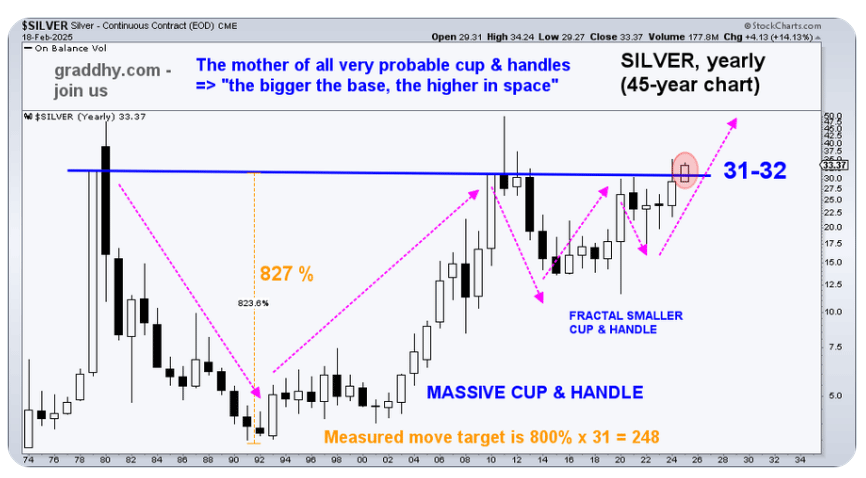
The gold fractals showed a flattening in their trajectory from consolidating to indeterminate. My suspicion is they will resume their march towards the 55 full consolidation level, but that’s just a guess. We have to see where the next couple of weeks go.
Miners & Related
Coeur Mining (CDE – $5.02) presented at the BMO Capital Markets Global Metals, Mining & Critical Minerals Conference (SLIDES HERE). It was the standard corporate presentation, leading off with the transformational SilverCrest acquisition:
The really important points here that will drive Coeur’s stock price are “The combined company is expected to generate a post 1Q run rate of~$700 million of EBITDA and ~$350 million of free cash flow in 2025” and “The acquisition is expected to accelerate debt reduction.”
Their key deliverables for 2025 are:
CDE is a Buy under $5 for a $20 target as gold goes higher.
Primary Risk: Prices of precious metals fall due to US dollar strength.
Sandstorm Gold (SAND – $6.24) did one of their Portfolio Updates. Following record annual production in 2024 of over half a million gold ounces, Lundin Gold has published a significant increase in the Mineral Reserves and Mineral Resources at the Fruta del Norte mine in Ecuador, with plans to publish an Initial Mineral Resource for the Bonza Sur deposit later in the year. Sandstorm holds a 0.9% net smelter returns royalty on the precious metals produced at Fruta del Norte.
Ivanhoe Mines released positive results from two independent studies covering the three-phase Platreef mine in South Africa. An updated Feasibility Study on the Phase 2 expansion targets first ore feed into the 770,000 tonnes per annum Phase 1 concentrator in the fourth quarter of 2025. Sandstorm holds a gold stream on the Platreef mine entitling it to purchase 37.5% of payable gold produced from Platreef until 131,250 gold ounces have been delivered, then 30% of payable gold produced until an aggregate of 256,980 ounces are delivered. Sandstorm will make ongoing cash payments of $100 per ounce of gold. The company anticipates annual average gold deliveries of 1,000–2,000 ounces during Phase 1, increasing up to 10,000 ounces with Phase 2 production. Longer term, the company forecasts gold deliveries of between 15,000–20,000 ounces per year once all three phases achieve full design capacity.
Minas Argentinas, the operator of the Gualcamayo mine in San Juan, has submitted a $1 billion mining investment plan that includes the development of the Gualcamayo Deep Carbonates Project (DCP). That includes the construction of a new underground mine, a milling system, and a floatation plant with a processing capacity of 3,500 to 4,500 tonnes per day. The DCP is expected to yield approximately 120,000 ounces of gold annually for at least 17 years. A feasibility study and engineering studies are underway on the DCP and are expected to be completed in 2025.
Sandstorm has several royalties on the Gualcamayo mine, summing to a 1.0% to 3.0% royalty on production from oxides, a 2.5% royalty on production from the DCP, and a $30 million production payment upon commercial production at the DCP. In 2025, Sandstorm anticipates operations at Gualcamayo to exceed the production threshold, triggering the 3.0% NSR on oxides production. SAND is a Buy under $10 for a $25 target.
Primary Risk: Prices of precious metals fall due to US dollar strength.
Sprott Inc. (SII – $42.25) reported December fourth quarter revenues up 20.2% from last year to $41.161 million, nicely above the $38.32 million consensus estimate. They earned 46¢ per share, just under the consensus for 48¢.
On the conference call (AUDIO HERE and SLIDES HERE and TRANSCRIPT HERE), CEO Whitney George said they ended the year with $31.535 billion in assets under management (AUM), down 5.7% from $33.439 billion at the end of September, but up 9.7% from December 2023. As of February 21, AUM had further increased to $33.5 billion. Whitney said: “During the year we benefited from strong precious metals prices as well as $698 million in net sales, primarily in our physical trusts and uranium and critical materials ETFs.”
During 2024, they launched three new critical materials strategies: Sprott Junior Uranium Miners ETF, Sprott Copper Miners ETF, and Sprott Physical Copper Trust. They think the realignment of global trade under President Trump plus a focus on energy security will create demand for critical materials produced in “friendly” jurisdictions. So they are developing new exchange-listed and actively-managed critical materials strategies to capitalize on the trend – probably including both physical trusts and managed equity exchange-traded funds. Buy SII under $40 for a $70 target price.
Primary Risk: Prices of precious metals fall due to US dollar strength.
Cryptocurrencies
Cryptocurrencies are a diversifying asset that offer a unique opportunity to make (or lose!) a lot of money quickly.
Bitcoin (BTC-USD on Yahoo – $84,335.09) fell to a multi-month low. I think Wall Street is hoovering up coins from weak hands. The race for wealth funds around the world to scoop up bitcoin may finally be on. Abu Dhabi’s sovereign wealth fund, Mubadala Investment Company, revealed a $460 million purchase.
In the US, the SEC is dropping lawsuits against crypto companies left, right, and center – first Coinbase, then Robinhood, now OpenSea. Since Gary Gensler left it’s a completely different agency. Investors don’t care yet, but they will. I still think bitcoin hits $150,000 this year.
BTC-USD, ETH-USD, IBIT, and ETHA are Strong Buys.
Primary Risk: Bitcoin falls due to over-regulation or is surpassed by another cryptocurrency.
iShares Bitcoin Trust (IBIT- $47.35) has a new seventh-largest holder – Abu Dhabi’s sovereign wealth fund, mentioned above. IBIT remains the cheapest and easiest way to Buy bitcoin for the 2028, 2032, and 2036 halvings.
Primary Risk:Bitcoin falls due to over-regulation or is surpassed by another cryptocurrency.
iShares Ethereum Trust (ETHA- $17.05) is the cheapest and easiest way to buy ethereum. ETHA is a Buy for the coming explosion in token-funded start-ups.
Primary Risk:Ethereum falls due to over-regulation or is surpassed by another cryptocurrency.
Commodities
Oil – $70.13
Oil fell to the lowest closing price this year after prices dipped below their 100-day moving average of about $71.51 as traders feared increased flows from Iraq. Crude has now fallen for five straight weeks, the longest streak in more than a year. But this oil selloff is not driven by any physical market weakness. This is just financial positioning getting flushed out. OPEC+ is going to postpone its 120,000 barrel-a-day output hike for the fourth time. There is about to be a painful reality check when the International Energy Agency has to cut their 2025 production forecast and raise their 2025 demand forecast.
The July 2026 Crude Oil Futures (CLN26.NYM – $no trades) are a Buy under $70 for a $200+ target. Only buy futures for all cash; do not use margin.
The United States 12 Month Oil Fund, LP (USL – $37.53) is a Buy under $40 for a $100+ target.
Vermilion Energy (VET – $8.47) reports earnings after the close next Wednesday and holds a conference call Thursday morning. The two analysts estimating revenues are at $479.0 million and $526.6 million for an average of $502.8 million. Only one has an earnings forecast at $1.67. The lone forecast for March quarter revenue guidance is $619.1 million.
They closed the Westbrick Energy acquisition, which adds stable annual production of 50,000 barrels of oil equivalent per day, 75% gas and 25% liquids, and approximately 770,000 net acres of land in the southeast portion of the Deep Basin trend in Alberta. It includes four operated gas plants with a total capacity of 102 million cubic feet a day. This footprint is contiguous and complementary to Vermilion’s existing Deep Basin assets, providing significant operational and corporate synergies.
Vermilion has identified over 700 future drilling locations on the acquired acreage. Management said that with this depth and quality of inventory, they expect the acquired assets to have the ability to maintain flat production for over 15 years while generating significant free cash flow to enhance their long-term return of capital framework. VET is a buy under $11 for a target price of $24 or more.
Primary Risk: Oil prices fall.
Energy Fuels (UUUU – $4.02) reported 2024 results. Revenues rose 105.9% from last year to $78.11 million, clobbering the $44.22 million estimate. They had a GAAP loss of 28¢ a share.
On the conference call (AUDIO HERE and SLIDES HERE and TRANSCRIPT HERE), CEO Mark Chalmers said they are building a global critical minerals powerhouse. In 2024 they resumed US uranium mining, realized profitable uranium sales, achieved commercial US rare earth production, and secured two “Tier 1” critical mineral projects in allied nations, which upon development are expected to be able to provide low-cost rare earth feedstocks to their US processing plant for decades. They are on the verge of profitability in the next two years.
Energy Fuels is three companies in one:
They are focused on high-value products and have complete flexibility in what they process at the White Mesa mill.
They are developing an innovative, low-cost, US-centered rare earth elements (REEs) supply chain. This is going to be a huge competitive advantage over the next decade as China limits Western access to REEs.
UUUU will benefit if the Financial Times is right that US and European energy groups at risk from uranium supply crunch. They said that the threat of future shortages comes as Kazakhstan, the world’s biggest producer of uranium with a 40% market share, sells more to Russia and China while less is going to the US and Europe. Roughly two-thirds of sales by Kazakhstan’s state-owned mining group, Kazatomprom, went to buyers domiciled in Russia, China and the home market combined in 2023, compared with about one-third in 2021. Only 28% went to US, Canadian, French, and UK buyers combined in 2023, down from 60% in 2021. Cameco, one of the world’s largest publicly traded uranium producers and the biggest western supplier based in Canada said: “We’re on a depletion curve that I don’t think many customers have realized.”
The World Nuclear Association expects global uranium demand to double by 2040. A host of nations including the US, UK, and South Korea have pledged to triple global nuclear energy capacity by 2050. Energy Fuels is one of the few US-based public uranium miners.
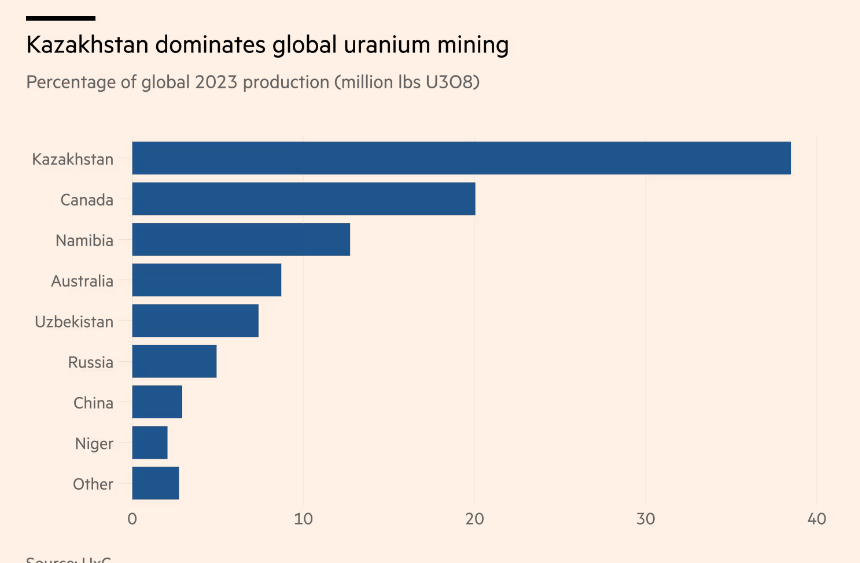
With uranium prices down to the mid-$60s, they are not selling anything. Production goes into inventory to be sold in the spot market later at higher prices. Energy Fuels has around $1 billion of metals inventory and closed today at a $790 million market cap. It’s a steal. UUUU is a buy under $8 for a $30 target.
Primary Risk: Uranium prices fall.
Freeport McMoRan (FCX – $37.42) presented at the BMO Global Metals, Mining & Critical Minerals Conference (AUDIO HERE and TRANSCRIPT HERE). CEO Kathleen Quirk said Indonesia’s Energy and Mineral Resources Minister agreed to let the company resume exports of copper concentrate until repairs at the smelter are completed, but they want higher export duties.
On the other hand, Citi said Freeport is a “big winner” after President Trump ordered his administration to explore new import tariffs on copper from other countries. Jefferies upgraded FCX from Hold to Buy and raised their target price from $40 to $48 just one month after downgrading the stock. FCX is a buy under $44 for a $65 target within two years.
Primary Risk: Copper prices fall.
* * * * *
RIP Roberta Flack
* * * * *
Your rethinking psychotherapy Editor,
Michael Murphy CFA
Founding Editor
New World Investor
All Recommendations
Priced 2/27/25. Check out the complete Portfolio page HERE.
Buys
These are the stocks everyone needs to own because transformative events are happening over the next year or two, and I expect to hold them long-term.
Tech Dominators
Corning (GLW – $49.00) – Buy under $33, target price $60
Gilead Sciences (GILD – $111.99) – Buy under $90, first target price $120
Meta (META – $658.24) – Buy under $655 for a long-term hold
Micron Technology (MU – $91.82) – Buy under $102, first target price $140
Nvidia (NVDA – $120.15) – Buy under $125, first target price $180
Onsemi (ON – $47.38) – Buy under $60, first target price $100
Palantir (PLTR – $84.77) – Buy under $100, target price $150
PayPal (PYPL – $70.73) – Buy under $68, target price $136
Snap (SNAP – $9.99) – Buy under $11, target price $17+
SoftBank (SFTBY – $28.20) – Buy under $25, target price $50
Small Tech
Enovix (ENVX – $9.04) – Buy under $20; 4-year hold to $100+
First Trust NASDAQ Cybersecurity ETF (CIBR – $65.56) – Buy under $60; 3- to 5-year hold
PagerDuty (PD – $17.54) – Buy under $30; 2- to 5-year hold
QuickLogic (QUIK – $6.09) – Buy under $10, target price $40
Redwire (RDW – $14.03) – Buy under $18, first target price $36
Rocket Lab (RKLB – $19.83) – Buy under $13, target price $30+
$20-for-$1 Biotech
AbCellera Biologics (ABCL – $2.92) – Buy under $6, target $30+
Akebia Biotherapeutics (AKBA – $1.83) – Buy under $2, target $20
Compass Pathways (CMPS – $3.92) – Buy under $20, hold a long time for a 10x return
Editas Medicines (EDIT – $1.83) – Buy under $6 for a double in 12 months and a long-term hold to much higher prices
Inovio (INO – $1.94) – Buy under $14, hold a long time
Medicenna (MDNAF – $0.70) – Buy under $3, first target $20, then maybe $40
ScyNexis (SCYX – $1.00) – Buy under $3, target price $20, then $50
Inflation
A Short-Sale or REO House – ($415,400) – Hold
Bag of Junk Silver – ($31.89) – hold through silver bull market
Sprott Gold Miners ETF (SGDM – $32.50) – Buy under $28, target price $50
Sprott Junior Gold Miners ETF (SGDJ – $36.99) – Buy under $39, target price $100
Sprott Physical Gold and Silver Trust (CEF – $28.19) – Buy under $18, target price $30
Global X Silver Miners ETF (SIL – $34.57) – Buy under $30, target price $50
Coeur Mining (CDE – $5.02) – Buy under $5, target price $20
Dakota Gold (DC – $2.97) – Buy under $2.50, target price $6
First Majestic Mining (AG – $5.25) – Buy under $11, next target price $23
Paramount Gold Nevada (PZG – $0.36) – Buy under $1, first target price $10
Sandstorm Gold (SAND – $6.24) – Buy under $10, target price $25
Sprott Inc. (SII – $42.25) – Buy under $40, target price $70
Cryptocurrencies
Bitcoin (BTC-USD – $84,335.09) – Buy
iShares Bitcoin Trust (IBIT – $47.35) – Buy
Ethereum (ETH-USD – $2,165.81)– Buy
iShares Ethereum Trust (ETHA- $17.05) – Buy
Commodities
Crude Oil Futures – July 2026 (CLN26.NYM – no trades) – Buy under $70; $200+ target
United States 12 Month Oil Fund, LP (USL – $37.53) – Buy under $40; $100+ target
Vermilion Energy (VET – $8.47) – Buy under $11; $24 target
Energy Fuels (UUUU – $4.02) – Buy under $8; $30 target
EQT (EQT – $46.63) – Buy under $35; $70 first target
Freeport McMoRan (FCX – $37.42) – Buy under $44; $65 target within two years
Holds
These are holds but not sells – yet. They could get moved back to one of the buy categories if their prices drop or outlook improves, or they could become sell recommendations in the future.
Apple Computer (AAPL – $237.30) – Expect to move back to Buy under $175 for new iPhones
Fastly (FSLY – $6.73) – Hold for March quarter results
TG Therapeutics (TGTX – $28.53) – Hold for buyout at $40+
Publisher: GwynRose LLC, 5348 Vegas Drive, Suite 868, Las Vegas, NV 89108
New World Investor does not act as a personal investment adviser or advocate the purchase or sale of any security or investment for any specific individual. The recommendations and analysis presented to members are for the exclusive use of members. Members should be aware that investment markets have inherent risks and there can be no guarantee of future profits. Likewise, past performance does not assure future results. Recommendations are subject to change at any time. Nothing in this presentation should be considered personalized investment advice. No communication to you by Michael Murphy or any of our employees or contractors should be deemed as personalized investment advice.
Copyright ©GwynRoseLLC 2025
New World Investor Mastermind Group
1. Post unto others as you would have them post unto you.
2. Keep it clean, like a 1950s family television show. Your alter ego can run free on Twitter.
3. NO PERSONAL ATTACKS! If you don’t like the stock, don’t trash the person. Everyone is responsible for their own due diligence and investments.
4. Don’t post here about politics or religion – you aren’t going to change anyone’s mind. Again, NO PERSONAL ATTACKS!
5. The investment implications of something going on in politics or religion is OK.
6. Of course, there’s never a reason to slur someone based on race, religion, gender, sexual orientation, or country of national origin.
7. Please, no snark!
 Print This Post
Print This Post

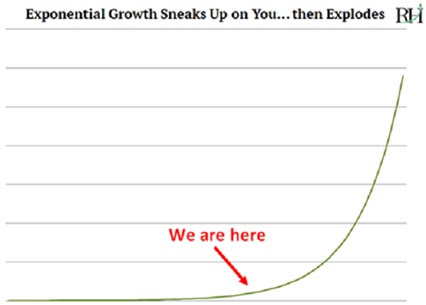
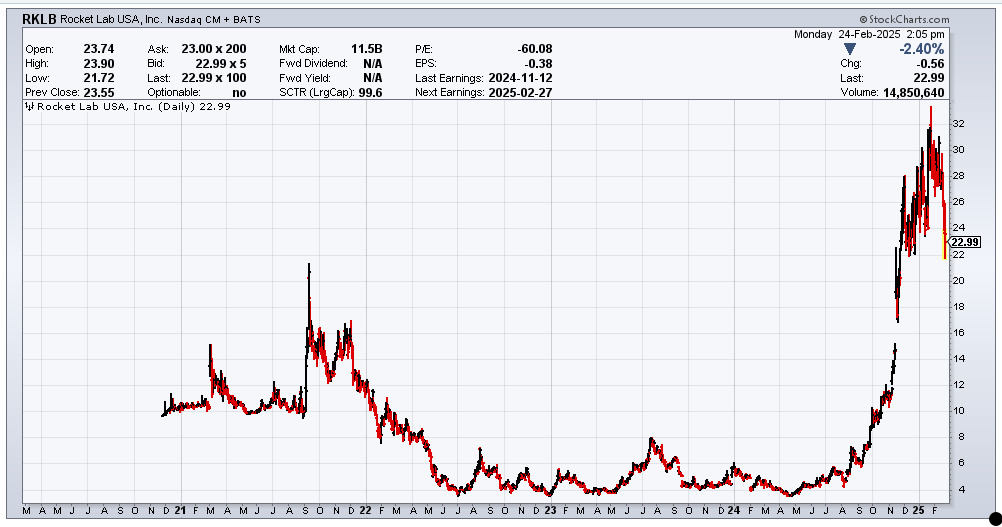
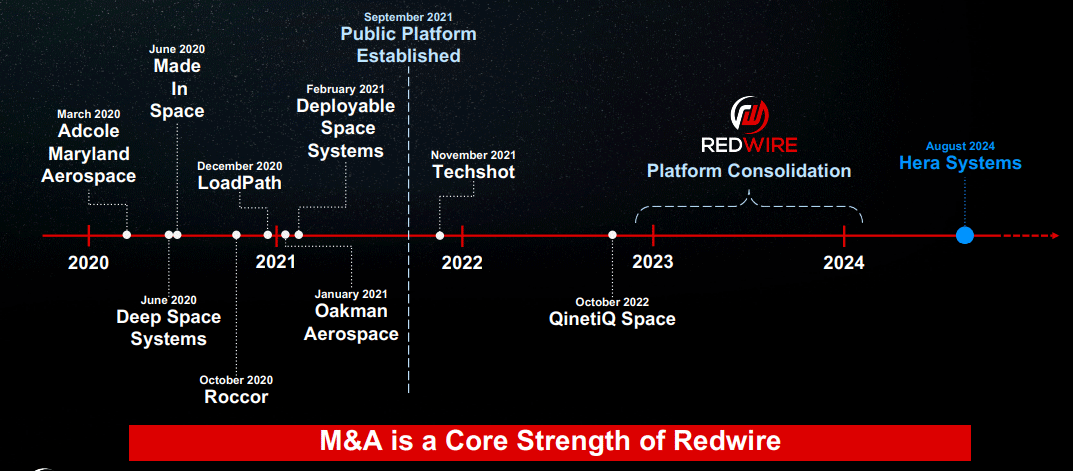

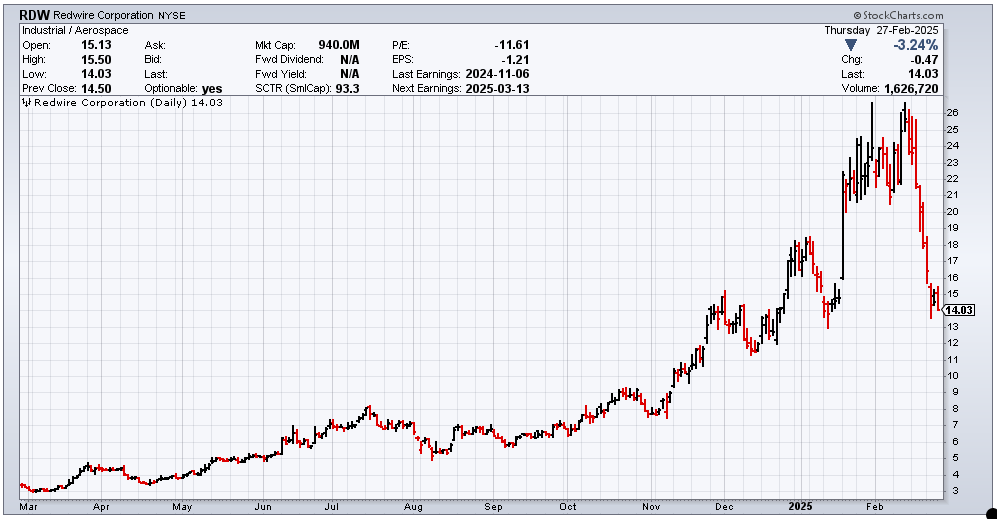








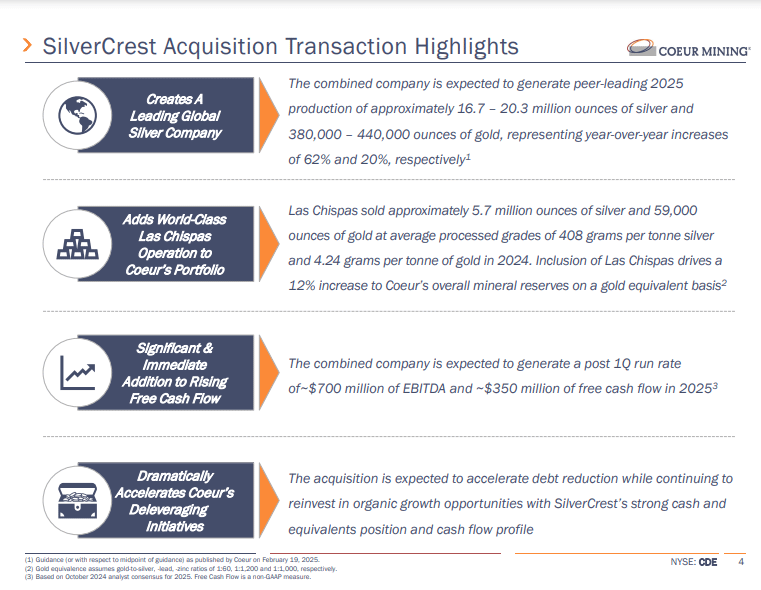

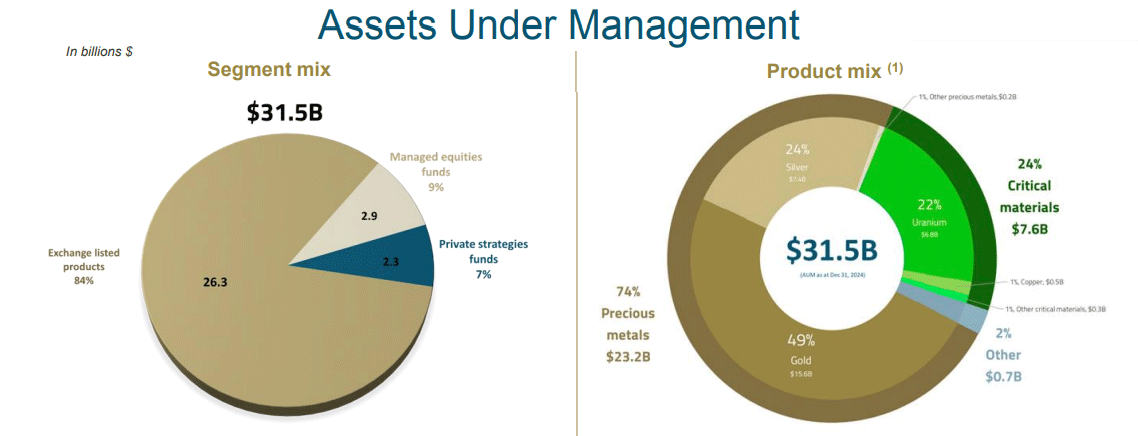

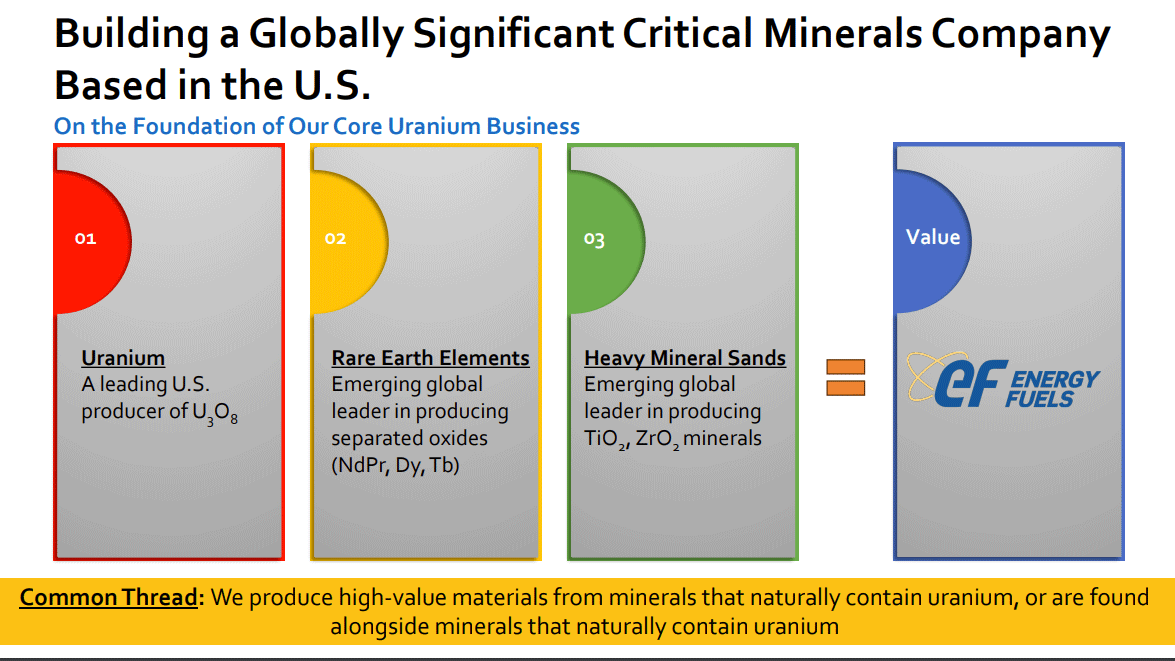

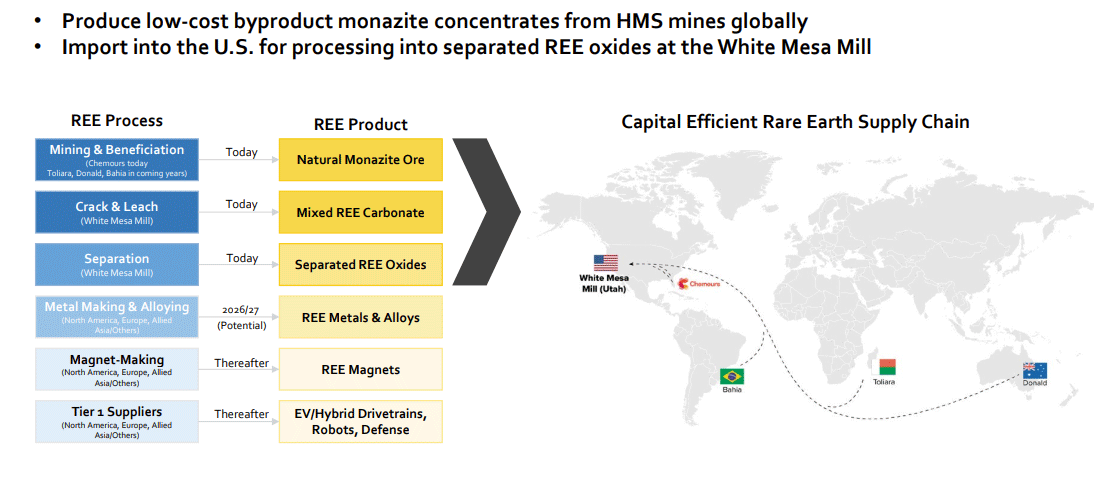



First
AKBA
Again, we are left in limbo in a hold position, relying on the confidence of your purchase of more shares under the buy limit. For those of us who do not have a full understanding of how money is moved in these situations please help us to understand. Firstly, you say that most people on dialysis are enrolled in government healthcare and are covered by TDAPA from day one. This is a good thing, this segment is covered 100% byTDAPA and who would opt for continued use of Auryxia if dialysis can be avoided. Then there is the segment of people who rely on private 3rd party approval prior to application for payment from TDAPA or is this money advanced automatically when application for approval is made. I can’t see approval being a huge issue when the annual cost is purported to be $15,500 for Vafseo. MM,could you please clear up this issue.When is the TDAPA advanced? So with 555000 people requiring dialysis in the US at the moment and an annual cost of approximately $15,500 and well over a 100,000 new cases per year this translates to blockbuster potential of 8.6 Billion just in the US alone, If you add in the ROW and the success of studies to investigate usage in non-dialysis patients this is truly quite large. Michael. please, a primer on undrestanding the flow of money ,how it works and is this truly a blockbuster of epic proportions. Your input in adressing this understanding, albeit probably flawed on my part, would be greatly appreciated. Thanks
MM – thanks for the Redwire reco but please explain why it recently dropped from high $20’s share price to $14?
Repost of my concern about AKBA.
I am leading the discussion of AKBA on stocktwits regarding prior authorization for Vafseo. I am viber7 there. Nobody seems to know if TDAPA payment waits for insurance company approval using prior authorization procedures. If PA is denied, TDAPA is dead? Or does TDAPA pay the add-on anyway, even if PA is denied? Since the add-on is many times higher than the insurance payment, I wouldn’t care if PA is denied but we get the add-on. Probably wishful thinking on my part.
MM? MM? MM? Others?
MM–in this update, are you saying that prior authorization for patients on govt healthcare doesn’t matter and TDAPA pays anyway?
Please address all this. Thanks. It might explain the decline in the stock price.
Hi JGMD
Not sure if I asked the same question or questions already(see post above) hopefully we get some decent answers today.
Maybe MM is sick,that he isn’t answering anybodies questions,just a thought
Mia or maybe he doesn’t have anything to say about akba
Can anyone find how many shares of akba that john butler currently owns,all I am seeing are sales,could this be a red flag warning ⚠️
Butler sold a small % of his holdings for tax purposes. No problem. Follow Stocktwits.
Tx,and fyi i am following on stocktwits
Relative strength in a shitty market–AKBA, TGTX. Own these.
Relative weakness–ENVX, UUUU, SCYX. ENVX has plunged, but is still way overvalued.
New World Investor for 3.6.25 is posted,